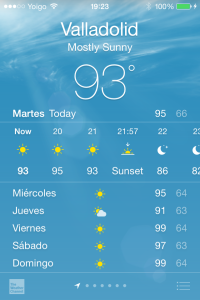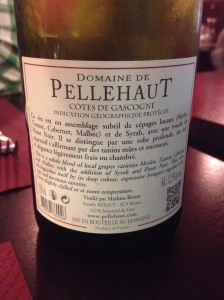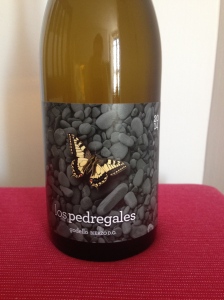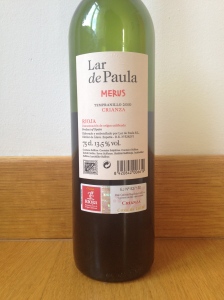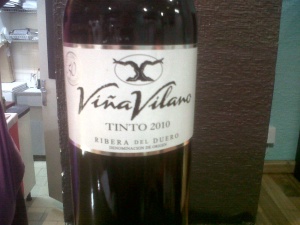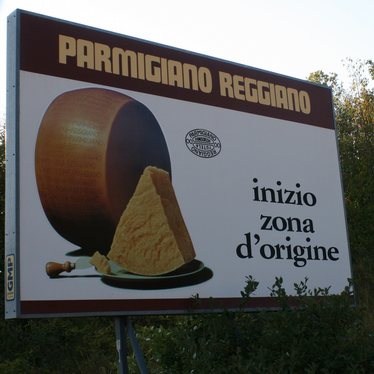Spring is trade fair season when many, many new wines are combed through and discovered. Entering summer, the sifting begins. Samples are catalogued and orders are placed to ready for the long road into fall when the majority of retail wine sales happen.
We have to find a way to pass the time in this heat. Last night we sat outside at midnight in 95°F weather trying to hold our heads up over the straw that was our lifeline to the cool tinto de verano we were sipping.
We started with some samples of solera wines this morning. We discovered Pérez Barquero at FENAVIN, the Spanish National Wine Fair in early May. They’ve been written up by Eric Asimov in the Times and have loads of Parker and other points, but are little known outside of Spain, probably because they are not within the boundaries of sherry production. Their appellation, D.O. Montilla-Moriles, is much further inland than the manzanilla-dominated coastal sherry triangle that includes Sanlúcar de Barrameda, El Puerto de Santa María and Jerez de la Frontera. Here in Montilla, just south of Córdoba, the pedro ximénez grape thrives on super chalky soils. It passes through neutral barrels at various levels of criadera on its way to making Fino, Oloroso, Amontillado, and Dulce versions of itself.
We also embraced a house-style vermouth casero full of clove and cardamon. We embraced it right into a home-brewed Moroccan spearmint iced tea I made with honey. The combination was divine on a day where highs will reach into the low 100s F.

Here we can see that PX can be enjoyed with canned peaches and aged Zamoran sheep’s cheese. I would like to stress can be. Although I think Miguel was on to something.
We are also drinking–
Vivaz Prieto Picudo 2014. Have two glasses and then say that three times fast. The indigenous grape varietal from the D.O. Tierra de León, I can only ever get various versions of strawberry(macerated, baked with cream, fresh-picked, dried, candied, etc.) in the bouquet. The zippy acidity and freshness makes it an obvious summer drinking wine that I’ve enjoyed, but profile is a bit limited. It won’t get me to switch from my Cigales tempranillo rosados.
Harmonie de Gascogne 2014. It was raining cats and dogs on our way into Villandraut on the D-824 so we stopped in Mont-de-Marsan and ducked into a pizzeria close to midnight. The guy was cranking out homemade pizzas and listening to great electro. He had the above wine by the glass. It was a deep purple color with thick tears and plum and blackberry on the nose. The tannins were nice and present but soft and had a long finish –not bad wonderful for a local IGP wine by the glass. It went nicely with the veggie pizza. I’ll be ordering from them. It seems they are best known for their Armagnac. €11, 12.5% abv
Baloiro Blanco 2014. If you needed more of a reason to drink godello, it is godello with a splash of the more obvious doña blanca, and much more obvious jerez, or palomino. You might think muscat but here in this part of Spain, there are 17% plantings of jerez and 2,4% of the doña. Muscat is not permitted in the D.O. Bierzo. White blossoms and stone fruit dominate and the godello contributes to traces of minerality and the medium finish. Very nice, easy drinking wine from Bodega Luzdivina Amigo. €13
Sete Bois 2013 Albariño. Stone fruit, med+ acidity. Classic summer quaffer. €7.70, 12.5% abv
Los Pedregales 2014. Nice structured godello from D.O. Bierzo. Hand-picked vines at 550 meter above sea level. Top yield is around 1,500 kg/hectare (very, very low). €10
Genio y Figura 2014 Albariño. An excellent example of a slightly more serious albariño. A lot of stone fruit, melon even. €14
